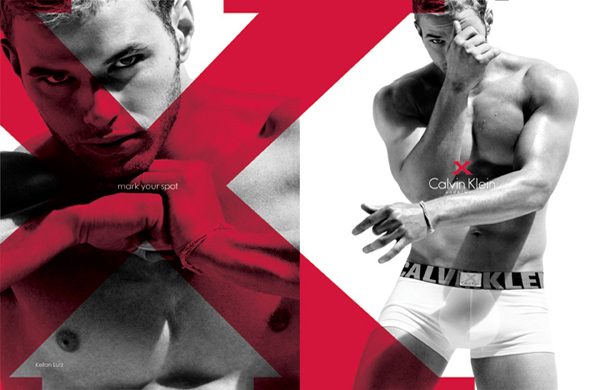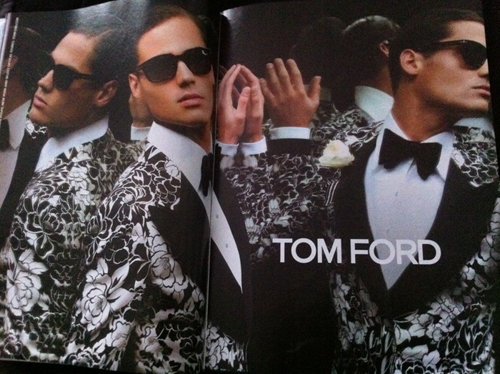



Advertising is "the most pervasive cultural artifact in postmodern history" (Kates 28). It is professionally created, then developed and deployed to reinforce certain behaviors and values (Aubrey 1). Since the United States is a capitalist nation, advertising has become one of the main tools for controlling, directing and shaping consumerism to enhance growth (Harrison 56). Advertising presents consumers with "consumption packages" that enable individuals to pursue desired good and "artificially framed styles of life" (56). According to Schroeder and Zwick, "Advertising imagery constitutes ubiquitous and influential bodily representations in public space, incorporating exercises of power, surveillance and normativity within the consumer spectacle" (qtd in Harrison 57). The multimodal use of photographs, verbal text, typeface, layout, color and design together create a unified communication unit that seeks to sell a product (Harrison 58).
The exploitation of men's bodies has resulted in increased attention to male consumption by advertisers. Advertisers seek to profit off the shift in what it means to be masculine by targeting consumer masculinity. (Aubrey 3). They are persuading males to purchase products once associated with females, by sexuality objectifying the male body (Aubrey 4).
At the same time advertisers are producing changing and conflicting messages about gender. They market to sensitive men, sensual men, and "macho" men. But these roles don't replace each other; they develop along side each other and create tension. Men may choose among different types of masculinity but they are constantly confronted by the contradiction of historical hegemonic masculinity (Aubrey 4).
Donnalynn Pompper states that "popular culture producers who consider change a destabilizing force that undermines men's masculinity cash in by promoting hegemonic masculinity 'fantasies' via Hollywood films, television programs, male lifestyle magazines, action toys and sports" (684). They produce images that create an unrealistic brand of masculinity and normalize body dissatisfaction. Pompper calls these mass-media images of the ideal male body "pervasive." (690). With so many of these images embedded in our culture, they are contributing to a new perception of masculinity that creates, "conflict, anxiety and dissonance (690).
